|
EDITORIAL
No. 3, September 2005
XINJIANG
In October 2005, China celebrates the 50th anniversary of the establishment of the Xinjiang Uyghur Autonomous Region, and in this the third issue of China Heritage Newsletter we examine aspects of the cultural heritage of Xinjiang, a region that covers 1.66 million square kilometers in China's far north-west, or roughly one sixth of the country.
The territory designated Chinese Turkestan in late-19th century English language writings comprised two distinct regions—southern Xinjiang or Kashgaria, and northern Xinjiang or Jungharia, dominated by the Mongols until the brutal suppression of their uprising in 1759 by the armies of the Qianlong Emperor. The whole of Chinese Turkestan was only administered as a Chinese province called Xinjiang, meaning "new territory", from 1884 onwards. Prior to then Xinjiang refered to the Junghar Basin and the Ili River valley; after 1884, the Chinese administrative centre shifted from the Ili region to Urumqi. The quelling of the Junghar rebellion ended a long period of Mongol or quasi-Mongol ascendancy over the north of the region, clearing the stage in Central Asia for Russo-Chinese rivalry and the resurgence of closely interrelated Turkic peoples.
Xinjiang, like the nations of former Soviet Central Asia, is home to many Turkic ethnic groups. Of Xinjiang's total population of 19.25 million (according to the census of 2000), 11.43 million are classified as members of non-Han national minorities. Although more than 40 of China's 55 'ethnic minorities' are said to live in Xinjiang, it is the Uyghur ethnic group that has lent the autonomous region its ethnic designation. In this issue we examine various aspects of the cultural heritage of Xinjiang, focusing in particular on that of the Uyghurs.
Also presented in this issue are the most recent developments in Chinese archaeology, heritage protection, conservation and museology, as well as two reports on major international conferences setting China's scientific traditions within new intellectual contexts—Professor Judith Farquhar on the September 2005 Conference on the History of Visual Representation in Chinese Medicine and Dr Michael Paton on the XXII International Congress on the History of Science in July 2005.
Mistaken Identities?
Focus on Cultural Heritage Protection in Xinjiang
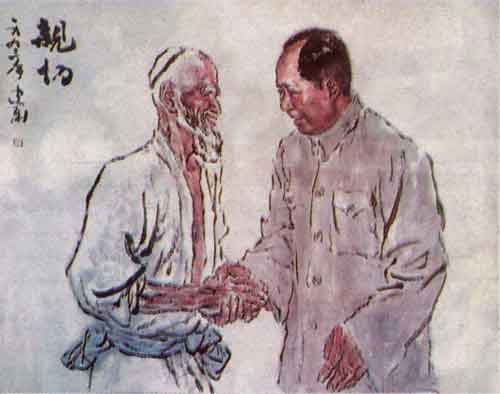
Fig. 1 Mao Zedong receiving Kurban Turum, a Uyghur electrical worker, in 1959. The meeting is legendary in the Khotan district, from where the elderly man (b.1883) set out on a donkey to ride to Beijing in order to present raisins to Mao. On arriving in Urumqi, Party officials arranged for him to fly on to Beijing. The audience is celebrated in many works of art and has iconographic status in Hetian (Khotan; Uyghur: Hotan) and other parts of Xinjiang. The meeting is also the subject of the only known monumental public sculpture in which Mao is depicted with a second figure. Painting titled Qinqie (Intimacy) by Gong Jianxin, 1993, made to celebrate the centennial of Mao's birth.
This year marks the 50th anniversary of the establishment of the Xinjiang Uyghur Autonomous Region. Autonomous or not, Xinjiang is invariably regarded in China as having been part of that country from the Han dynasty onwards, with the gaps between periods of assertive control, loose tutelage or nominal protectorate status being largely overlooked. Nevertheless, full dominion over what is today Xinjiang was only established in the late 19th century by the Qing central government in its successful gambits in the Great Game played by the Russian, British and Manchu empires. Even today, the traveller to Xinjiang can wander the streets of Xinjiang's oases without hearing the Chinese language or without seeing 'Chinese' faces. The 'identity' of Xinjiang remains distinctive, not merely by virtue of geography.
To celebrate the 50th anniversary, the central government of the People's Republic (PRC) and the Xinjiang regional government are channelling massive funds into cultural heritage protection in the region. How is this money allocated, and how is it being spent?
Defining the region's cultural heritage is a necessary first step in cultural heritage work. Yet, clearly no country or region the size of Xinjiang can have a single identity, so how is the cultural heritage of Xinjiang defined? What identities is Xinjiang given, or indeed allocated? And how are they presented?
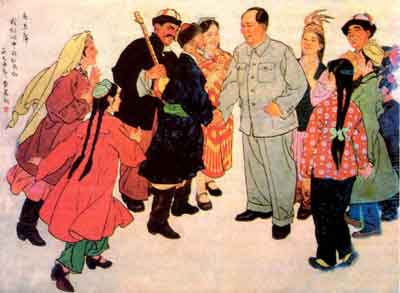
Fig. 2 Painting showing Mao Zedong and representatives of various ethnic groups from Xinjiang. Painting titled Chairman Mao Is the Red Sun in Our Hearts by Gong Jianxin, work commenced in 1964.
The cultural heritage of the Xinjiang Uyghur Autonomous Region is variously construed and defined in accordance with whether the region is classified to conform to strategic, geographical, historical, ethnic or religious guidelines. In the application of these guidelines, it could be postulated that the Chinese cultural heritage enterprise in Xinjiang operates within a descending hierarchy: Xinjiang as an inalienable part of China; Silk Road Xinjiang; and, ethnic minority Xinjiang. The first identity, namely that of Xinjiang as an inalienable part of China, or more simply put Xinjiang as Chinese, is formulated to conform with various strategic, geographical and historical guidelines. Most people accept the political reality of this identity; its expression through and distortion of cultural heritage work range in their effects, however, from the subtle through to the often heavy-handed. Silk Road Xinjiang is defined in relation to all the guidelines just mentioned, and is the favoured identity for the region in the context of general cultural heritage work. It has international appeal and encompasses some of the finest monuments of shared human cultural heritage. Yet even within the contours of this identity, the need to stress the hierarchically-dominant identity of Xinjiang as an inalienable part of China, albeit Silk Road Xinjiang, can intrude on cultural heritage preservation and protection.
The third identity, namely ethnic minority Xinjiang, places the nationality which was historically dominant in the region, that of the Uyghur, on an equal footing with the Qazaq (Kazak), Qirghiz, Uzbeq, Tartar, Mongol, Tajik, Xibe and other ethnic groups, all regarded as minorities in their own homelands. (See Fig. 2) This identity reflects a political reality within which most inhabitants of Xinjiang have learned to operate. In terms of cultural heritage work, however, the lower status given to this third Xinjiang identity often results in crude productions and mawkish presentation. The automatic presumption of Xinjiang as an inalienable part of China in the context of cultural heritage work is often unintentional and instinctive. The underlying motivation of the Chinese authorities is a desire to avoid creating or establishing monuments that may foster or support alternative political causes or sentiments, especially if they find expression through ethnic or religious cultural heritage sites. Monuments to the impossible are, however, in the interests of few residents of Xinjiang, but the heavy-handed application of the dictum that Xinjiang has always been an inalienable part of China to cultural heritage work can have destructive or risible effects. Relevant, contemporary examples of this are examined below.
Silk Road Xinjiang
Xinjiang, like India, was long regarded in China as 'the West'—an essential stretch of the Silk Road that ran between China and Europe from Roman times onwards. Ensuring that trade proceeded without interruption along the Silk Road was a priority for Chinese imperial policy towards Central Asia and Xinjiang, or what was then called Xiyu, or the Western Region. This vaguely-defined and loose geographical concept could extend as far as Sogdia or even to the Mediterranean, depending upon the economic and geopolitical reach of the Chinese empire at a particular time.
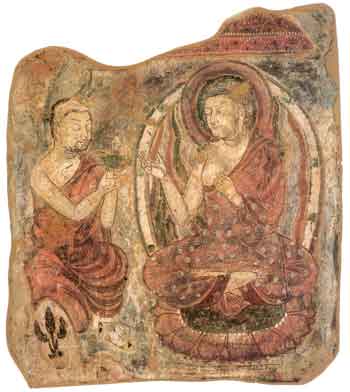
Fig.3 Removed section of Kumtura caves showing Buddha delivering a sermon
(now in the collection of the Museum of Indian Art Berlin; MIK III 9024)
China boasts of its Silk Road heritage with pride, the lion's share of cultural heritage funding having been earmarked over the past few years to ensure that the country's Silk Road legacy is recognised as part of the world's human cultural heritage. Beginning with Luoyang, Datong, Xi'an, Jiayuguan and Dunhuang, the Chinese government, as well as many overseas foundations and governments, most notably the Japanese, have invested heavily in Silk Road cultural heritage conservation in China. Only the Xinjiang stretch of the Silk Road was neglected. Attempts to have the entire Xinjiang portion of the Silk Road listed by UNESCO as a world heritage site failed, but, in November 2004, the Xinjiang Cultural Relics Bureau announced the launch of what was described in People's Daily as China's "largest cultural relics protection program to date": an RMB300 million plan to integrate cultural protection and tourism in the Turfan region. RMB200 million of that sum is to be used as direct investment in cultural heritage protection, with sites in Turfan municipality, as well as Shanshan and Toksun counties, singled out in particular. In addition, funding has been made available for the construction 1,285km of highways to link a number of 'Silk Road sites'—Dunhuang in Gansu, Jimsar (site of the ruins of the ancient city of Bishbaliq, north-east of Urumqi) and Loulan (east of Qiemo).
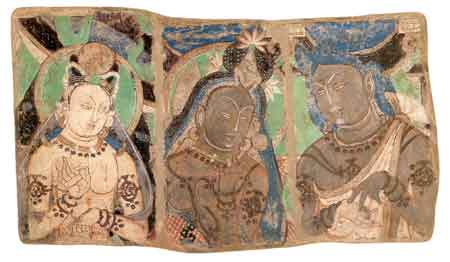
Fig.4 Triptych from outer passage, Qizil cave no. 224 (now in the collection of the Museum of Indian Art Berlin; MIK III 8864)
In 2004, specific cultural heritage protection plans were also drawn up for Loulan, Niya and the Turfan-Jiaohe district, all classifiable as Silk Road sites showing mixed Chinese and foreign cultural influences. Funding was also provided in 2004 for cultural relics protection work at more than 30 specific sites in Xinjiang, including many Silk Road sites, such as the Qizil, Kumtura and Qizilgaha Buddhist cave complexes outside Kucha (Chin.: Kuche), which were extensively plundered in the early-20th century, with much material from there now housed in the Indian Art Museum in Berlin. (See Fig. 3 and 4)
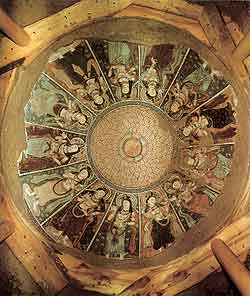
Fig.5 View of ceiling mural in Kumtura cave GK no. 21
Kucha, at the western end of the Tarim Basin, was a major Buddhist centre. Some scholars believe that Buddhism may have entered this area from India as early the 2nd century BCE. The Qiuci kingdom based there developed a distinctive art embodying Graeco-Roman, Indian and Chinese cultural influences. (See Fig. 5) Qiuci's music later formed one of the main genres of court music in the Tang dynasty, until which time Qiuci maintained independence from the Central Plains, or Zhongyuan, that is dynastic China. Qiuci's leading role in the dissemination of Buddhism is exemplified by the prolific contribution to the translation of Buddhist scriptures and philosophical texts by the scholar and teacher Kumārajīva (344-413 CE; Chin.: Jiumoluoshi), who is particularly famous for his translation of the Heart Suutra. Around the year 630, the translator and renowned ancient pilgrim Xuanzang travelled through Qiuci and reported the existence of 100 Buddhist temples and 5,000 priests. Many of the temples visited by Xuanzang were cave temples in strategically isolated locations where monks could devote themselves to religious practices, ascetic discipline and intellectual activities. These caves were sumptuously decorated by some of the leading painters drawn from Central Asia and even India, supported by wealthy donors and patrons. Today in the region of ancient Qiuci, there are some 400 grottoes and approximately 1,000 sq m of murals at eight grotto complexes, the best known of which are Qizil, Qizilgaha, Kumtura and Sumsam. (See Fig. 6) In 1985 the Xinjiang Qiuci Grottoes Institute was established not far from the Qizil Caves, and the institute perpetuated and extended the scholarly work carried out by the original Qizil Thousand Buddha Grotto Cultural Relics Preservation Office. Unlike Dunhuang, the caves in the Qiuci region have attracted few non-specialist tourists, largely because of their isolation and relative inaccessibility. However, tourism officials had different plans, and the linkage between tourism and conservation has proved to be unfortunate in the case of the Qizil caves, the oldest and largest of the Qiuci grotto complexes.
The Qizil caves have withstood vandalism by religious zealots, the sampling of large sections of murals by early 20th century European explorers, most notably Von le Coq, and desultory defacement by Red Guards, yet enormous damage has, ironically, been inflicted over the last two years in preparation for an anticipated flood of tourists. This is best described by Shi An writing in the May 2005 issue of the Beijing-based review journal Dushu, or Reading:
After the initiation of the opening and reform in China, the problem of 'destruction in the name of preservation' emerged at Qizil. The site underwent a major restoration, and today's visitors now have ready access to the caves thanks to that work. Yet the rubble from the rebuilding and cement reinforcement of some walls is strewn about the site, and the joining together of earlier separate caves [belonging to unrelated periods] and their new regroupings will impede further research, in what can only be described as laughable new concatenations. The failure of scholars from one notable Buddhist grotto research institute to properly clean older murals revealed after having peeled away later layers of murals has probably destroyed all possibility of ever studying the historical sequence of murals with more advanced technology. Even more lamentable is the erection of a small tiled structure with a Chinese roof and upswept eaves, derisively termed the "Coffee Shop", on the cliffs at the upper second level of caves on the eastern side of the valley and enclosing caves nos. 17–72. (See Fig. 7)
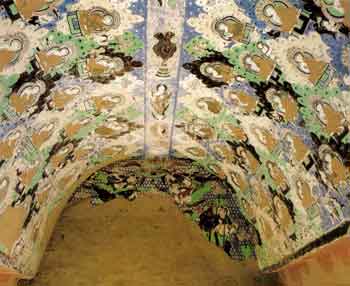
Fig.6 View of ceiling and wall from Qizil cave no. 8
This is not all. In recent years a man-made lake has been constructed at the Qizil site, and near the Muzat River there is now a 50,000 sq m body of water described as "the largest swimming pool" in southern Xinjiang. A Western-style changing pavilion forms a central visual feature at the site. These two adjacent water wonderlands are described in the promotional literature at the site as a tribute to China's "new scenic sensibility". Shi An continues:
When this lake, named for the Buddhist translator Kumaarajiiva's mother, was being constructed, workers 'discovered' a number of ancient remains. Today the cultural relic exhibition hall at Qizil displays an incomparably beautiful pottery lingam, a phallus carved with dragon patterns. This was unearthed in the course of installing the lake. The phallus provides us with a tantalising hint of how many ancient artefacts disappeared under the bulldozers of the lake's construction team.
Not only have potential sites been destroyed for future archaeologists and society, but the destruction of what has survived has also occurred in the recent transformation of Qizil. The same author describes how he witnessed, on 31 August 2004, a bulldozer, operating directly below cave 139 known as the Elephant Cave, rip through half of the wall of cave 194a below it. Fortunately, two professors from Peking University were in the vicinity when the calamity occurred, and they stopped the bulldozer operator from proceeding. However, the earth swept aside by the bulldozer bristled with fragments of fresco as well as ceramic shards.
It is perhaps a stretch of the imagination to construe such a misguided revamp of this cultural heritage site as an example of the application of a conceptual notion of Xinjiang as an inalienable part of China to what is part of Silk Road Xinjiang. However, the "Coffee Shop" and the modern swimming pool cater to the perceived demands of the modern Chinese tourist, even if few are likely to make the journey to Qizil for a swim. Yet other aspects of the revamped Qizil entail stamping a definitive modern Chinese image on this heritage site. A statue of Kumaarajiiva is carved in the distinctively predictable style reserved for the 'heroic' Chinese scholar, while a Laughing Buddha that now overlooks the swimming pool also bears no relationship to the sensitive aesthetics and religious iconography of Qizil. This corpulent laughing Maitreya reflects sensibilities that belong to China proper, not Xinjiang, and this inapposite style of Maitreya iconography only first appears in the 9th century, when the predominantly Hinayana Buddhist Qizil was in decline.
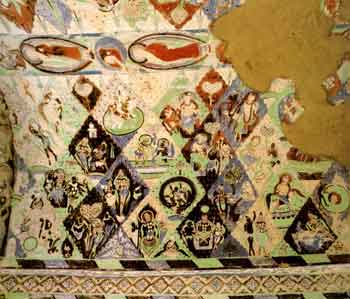
Fig.7 Corner of ceiling showing lozenge decoration in Jataka tale in Qizil cave no. 17
The Kumtura Caves too are also about to undergo major restoration work. This cave complex is situated on the lower Muzat river (see Fig. 8), and the caves are located in two areas. The first is called the Valley Entrance (Gukou) area, and the 32 caves there are designated with numbers preceded with the initials GK. (See Fig. 5) The second is the Grand Valley area. Although more recent than the Qizil caves, the Kumtura caves are less frequently visited by tourists. The caves are dated to the period from the 5th to the 8th century. The Kumtura complex comprises 112 caves, 40 of which contain murals or inscriptions. The caves have a more distinctive Central Plains style, with less of the local Qiuci style seen in the Qizil caves. UNESCO, in its description of the caves on its Beijing office's website, notes that "the caves were not hewn only by the Qiuci people but also by the Turk, Han and Uyghur peoples, leaving a combination of Eastern and Western cultures with unique historical, scientific and artistic value".(see Fig.9) The first stage of the restoration plan, undertaken with assistance of UNESCO and the Japanese government, began in 2001.This entailed preliminary survey work, research and planning for the subsequent major restoration. On 2 July 2005, the Japanese Embassy hosted the signing of an agreement between UNESCO and SACH for the second stage of the massive Kumtura conservation project. Hopefully, the entire site and its environs will eventually be managed by the cultural heritage authorities, rather than by tourism authorities imbued with a zealous penchant for packaging the site for the Chinese tourist.
The Silk Road is a road of investment faith through Xinjiang's cultural legacy, tying Xinjiang inextricably to China. The facility with which funding has been activated in Xinjiang for Silk Road projects has spurred on Chinese conservationists at grotto sites outside Xinjiang to ask more funding. At the beginning of August 2005, Li Zuixiong, deputy director of Dunhuang Academy, told reporters attending a seminar on Buddhist grotto protection held at the Yungang Grottoes, a world heritage site near Datong in Shanxi province, that 90% of ancient sites along the Chinese section of the Silk Road outside Xinjiang have lost their original appearance, pointing out that about half of China's World Heritage sites are located in areas deemed to have high levels of air pollutants.
It is to be applauded that vast sums of money are being poured into Xinjiang's cultural heritage, but the investments bespoke a slapdash approach to cultural heritage driven by a concept of tourism that is Chinese modernistic, rather than international modern, in approach. Here the model of Xinjiang as a historically inalienable part of China impinges on the celebration of global human heritage.
Xinjiang as an Inalienable Part of China
Over the past decade Xinjiang has been classified together with the poor regions and provinces of China's west or northwest as a focus for economic development and investment. In this context Xinjiang becomes another Chinese province, an abrupt break with earlier practice. This is well illustrated by the following. On 1 September 2005, the deputy-secretary of the People's Government of the Xinjiang Uyghur Autonomous Region, Aiyuz Ependi, presented a report on the implementation in Xinjiang of the Cultural Relics Protection Law of the PRC to the region's People's Congress. The report highlighted problem areas in the implementation of the PRC's cultural relics law in Xinjiang, and pointed out that the law itself required further clarification to be implemented fully, and talked of a "crisis" in protecting cultural relics in Xinjiang from theft, and of the need to train personnel qualified to implement cultural relics protection laws. It suggested that local officials working in the field of cultural relics "take the initiative in securing funds for the major projects of the state and the autonomous region".
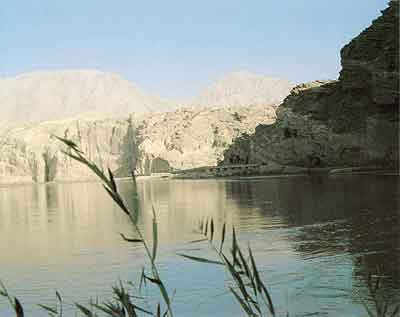
Fig.8 View from distance of the exterior of the Kumtura caves with the Muzat river in the foreground
At no point did the report of the meeting in China Cultural Relics News make use of the word "cultural heritage" nor refer to the concept, let alone that of intangible cultural heritage. Nor did the report touch on the question of ethnicity, peculiar for an autonomous region defined by its ethnicity. To all intents and purposes, the report was identical to one emanating from a people's congress meeting in any Chinese province. The report makes no mention of cultural relics' issues unique to Xinjiang, although past poverty, lack of training and education, and a precarious situation facing the protection of cultural relics in Xinjiang, all cited in that report, suggest that the record is not commendable. The report might represent a determined effort to avoid pleading for Xinjiang's unique needs on special grounds, the most obvious of which would seem to be the perceived obligation in an autonomous region for government planners to demonstrate greater flexibility and to take minority cultural heritage traditions into consideration.
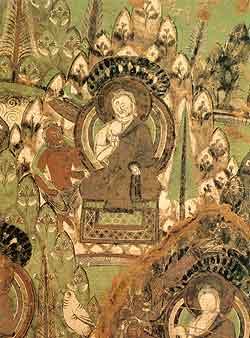
Fig.9 View of southern corner of ceiling in Kumtura cave no. 23
However, the classification of Xinjiang as just another province of China does, of course, also benefit cultural heritage work, because it allows for flexibility and linkage. For example, in late July 2005, experts and officials engaged in conservation work in China's five north-western poorest 'provinces' (Xinjiang, Gansu, Qinghai, Shaanxi and Ningxia, two of which are autonomous regions) gathered in Lanzhou for a six-day working conference addressing cultural heritage protection issues in the northwest region. The meeting was convened by Gansu's North-western University and the China National Centre for the Ethnic and Folk Cultural Protection Project (Zhongguo Minzu Minjian Wenhua Baohu Gongcheng Guojia Zhongxin), a body under the university's direction which was founded in 2003. The centre brings together professionals concerned with the theoretical and practical aspects of intangible cultural heritage protection, and in its first two years scholars have focused attention on a number of cultural forms in the region, including the Uyghur muqam (or Mukam) music of Xinjiang, and encouraged governments to initiate protective mechanisms to save these threatened cultural systems. The main hurdle to cultural heritage work in this region, delegates to the conference stressed, was poverty combined with a shortage of funding.
Ethnic Minority Xinjiang
From the 1950s to the first half of the 1980s, Xinjiang formed part of a strategic ring of autonomous regions that ran from Tibet around the western, north-western and northern borders of China. This sparsely populated buffer zone, accentuated by redrawing Inner Mongolia's borders in 1979, highlighted the frontier quality of these areas, at the same time as it enclosed a permissible realm of the exotic. The exotic was administered in terms of ethnic difference and enshrined in the establishment of autonomous regions.
If the ecumenical and multicultural nature of Qing control was reinforced by religious and ceremonial policy directed from and patterned by the court, the People's Republic, the territory of which is more approximate to that of the Manchu-Qing dynasty rather than to the ethnically Han-Ming dynasty, founded its sovereignty on a Communist notion of equal opportunity within socialist republics, adopted in a diffused form from the Soviet Union, and then overlaid by a paternalistic Maoist vision of unified guided development. (See fig. 2) In the international Cold War environment, the ethnic groups who inhabited the west, whether Tibetan or Turkic, were depicted as 'captive peoples', and separatist movements were encouraged by China's detractors.
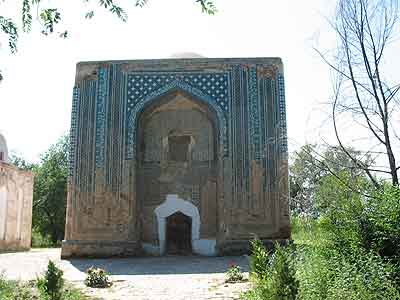
Fig. 10 Photograph showing the Tughluq Tömur Khan mazar in Huocheng in 2004. [BGD]
Uyghur ethnicity is the defining marker of Xinjiang as an autonomous region. In 1949, approximately 90% of Xinjiang's total population of less than five million belonged to the Uyghur nationality. Today it is estimated that the Uyghurs constitute only 45% of the population. However, most of the other major non-Han ethnic groups of Xinjiang (see Fig. 2)—the Kazak (Qazaq), Kirghiz (Qirghiz), Uzbek and Tartar peoples—speak Turkic languages very closely related to Uyghur and often mutually intelligible, or they use the Uyghur language as a lingua franca, as do some locally-born Han Chinese. The Chinese dialect spoken in Xinjiang also shows marked influence from Uyghur. Although this mostly influences intonation, many lexical items in the
Xinjiang dialect of putonghua Chinese, e.g. haizi-wawa (from the Uyghur ughrul-bala, a "diminutive" term of address which literally means a "confident but cute guy") is used instead of the more usual putonghua Chinese term, nanzihan, to convey the concept of a "a regular guy" or "a real man". The melting pot that is Xinjiang today has been nominally administered in accordance with policies developed by the Chinese for autonomous regions, but the educational and administrative systems there have failed to adhere to mandatory multicultural policies founded on linguistic reciprocity that could have provided Uyghurs with greater educational opportunities, while insisting that ethnic Han administrators have some fluency in the Uyghur language. The shortfalls in Chinese ethnic policy in Xinjiang, characterised by neglect as much as by interference, have resulted in many of the problems faced today by a rapidly modernizing Xinjiang.
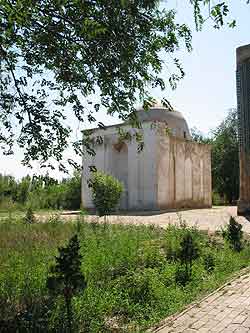
Fig. 11 Photograph showing left sepulchre at the Tughluq Tömur Khan mazar in Huocheng in 2004. [BGD]
The Uyghurs, like all of Xinjiang's 'ethnic minorities', have a well-established historical identity. This warrants restatement and delineation here, because a body of recent Western scholarship has focused on the re-establishment of the Uyghur ethnic identity and the allegedly renewed creation of the ethnonym Uyghur with the national delimitation movement in the Soviet Union in the 1920s. Such recent scholarship, questioning language as a criterion of ethnicity, loses sight of the continuity of the ethnonym Uyghur, especially in Chinese writings from the time of the earliest written mention of the Uyghurs in the Tang dynasty. The policy of ethnic delimitation was formulated by scholars with a strong historical sense, and the brief potted history below, reinforced by the picture of Uyghurs in Beijing that appears in Chinese historical writing, can serve as a paradigm for the substantial histories of most other ethnic groups of Xinjiang. Indeed, the Uyghurs are far more readily identified both today and in the historical record than the Hui Islamic group that has been undergoing assimilation over many centuries.
The Uyghurs were, and are, found throughout China, but most of their communities outside Xinjiang have now disappeared. The Uyghurs originated in southern Siberia and Mongolia and a clear line of descent can be established between the language of the Orkhon Turkic inscriptions of the first half of the 8th century and today's Uyghur language. The Uyghurs had close links with the Mongols and the Turks, although the boundaries between the Uyghurs and Turks remain unclear. The original Uyghurs enjoyed a pastoral and nomadic lifestyle, although at an early date they established settlements, practised agriculture and developed the written alphabetic language seen in the Orkhon inscriptions. The remains of an early Uyghur island fortress can be seen today in the Republic of Tuva in southernmost Siberia. This large square, adobe walled fortress cum-palace, set in the centre of Lake Tere-Khol, probably belongs to a period after the Uyghurs entered the Chinese historical record in the Tang dynasty.
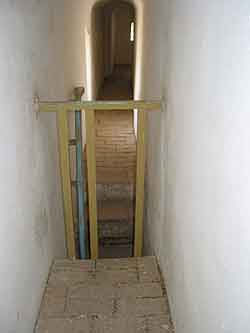
Fig. 12 Photograph showing stairway and ambulatory within the walls of Tughluq Tömur Khan mazar in Huocheng in 2004. [BGD]
The Uyghurs are referred to as the Huihu, Huigu or Huihe people in Tang dynasty histories after the year 840, when the Uyghur khaganate on the Mongolian Plateau suffered natural calamities and the Uyghurs were driven from their homelands by the Qirghiz. They entered China along three routes: one group travelled along the Hexi Corridor to become eventually today's Yugur people of Gansu province; one group pushed into the Ili river valley to lead a pastoral life, and some of these later travelled on towards Kashgar; and a third group migrated to the Turpan basin, where they occupied a fortress that had once been a centre of the Cheshi kingdom at Yarkoto (Chin.: Jiaohe) and established a capital at Qocho (Chin.: Gaocheng). The ruins of these two assiduously preserved major Silk Road cities can be seen today.
Uyghurs assisted the Tang court in the suppression of the rebellion led by An Lushan, identified by scholars either as a Sogdian or Turk, and many Uyghurs worked in China as government advisers, but more often as traders. The archaeological record shows that the Uyghurs comprised at various times, and often contemporaneously, adherents of shamanism, Manichaeanism, Zoroastrianism, Mazdeanism, Nestorian Christianity and Buddhism. Only at the end of the 10th and in 11th century did they begin to convert to Islam. Although they were latecomers to the area surrounding the Silk Road, their entrepreneurial and intellectual skills ensured that the Uyghurs came to play a key role in the oases around the Tarim Basin and in the Silk Road cities to the west.
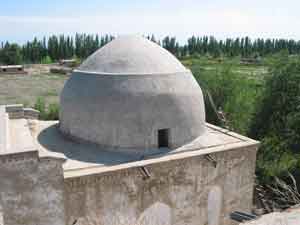
Fig. 13 Photograph showing view of roof of the Tughluq Tömur Khan mazar in Huocheng in 2004. [BGD]
In 1206, Tatatong'a, a Uyghur, entered the service of Genghis Khan as his secretary, and the written alphabet script of the Uyghurs, a script later than that used in the Orkhon inscriptions and possibly developed from Sogdian, was also adapted by the Mongols as a script for the Mongol language. The Mongol leader also selected many Uyghurs to serve in his chancellery as scribes and advisers. Some Uyghurs still lived in areas adjacent to the Mongols, often in farming communities. Following the Mongol conquest of China, the Mongols brought large numbers of Uyghurs to Dadu (Marco Polo: Cambaluc, Mongol: Khanbalik, Uyghur: Hanbegliq) where many formed part of an administrative class of the ethnically defined Semu people, together with Persians, Arabs and other Central and Western Asian nationalities. The Uyghur Lian Xixian served for a time as one of the dynasty's four pingzhang zhengshi (grand councillors), a post equivalent to deputy-premier. His father, Buluhaiya, was Genghis Khan's suwei (imperial bodyguard), and later served the court as duanshiguan (chief judge) and xuanweishi (pacification commissioner). His younger brother filled the post of Libu shangshu (minister of the Board of Ritual), and acted as a foreign envoy.
The Mongols also recruited locally from the Uyghurs resident in the Dadu/Beijing area. The visible community of Uyghurs in Dadu/Beijing was concentrated, from the Yuan dynasty onwards, outside the walls of the city in what is known today as the Weigongcun area of the Haidian district, called in the Yuan dynasty Weiwucun (Uyghur village). The area became known as a merchandising centre, as well as for its production of wine and for its ironsmiths. Although, following the collapse of the Yuan dynasty, the name Uyghur was used less frequently in Xinjiang and Central Asia where Uyghurs were generally identified by the oasis of origin or by their belonging to larger Islamic polities, the Chinese word Weiwu for Uyghur continued to be used in Beijing down to the 20th century. Various Ming texts refer to Weiwu village, although often written with different characters. In his Mengmo Ting ji (Notes from Mengmo Pavilion), a collection of essays printed in 1834, the Qing dynasty scholar Qiao Songnian wrote: "Weiwu Village is the name of a settlement in the Xizhimenwai area. Originally it was inhabited by the Weiwu people from the Xiyu [Western Region] who were brought here by Yuan Taizu [founding emperor of the Mongol-Yuan dynasty] and settled in this area." Weigongcun, first written with the characters for the toponym used today and meaning "Village of the Lord of Wei", appears on a map of Beijing only in 1915.
![Photograph showing tiled façade of the Tughluq Tömur Khan mazar in Huocheng in 2004. [BGD]](003/_pix/chn3edit12.jpg)
Fig. 14 Photograph showing tiled façade of the Tughluq Tömur Khan mazar in Huocheng in 2004. [BGD]
Genghis Khan had extended the Mongol empire as far as Europe and, in the wake of the slaughters and suffering occasioned by the Mongols, a number of khanates extended across Central and Western Asia. These khanates were eventually absorbed into the Islamic world, as their Turkic-Mongol leaders converted to Islam. For the Uyghurs, conversion afforded access to and influence in a larger Islamic world. It subsumed ethnicity, while maintaining wider cultural links throughout a Turko-Mongol set of new Islamic polities.
In the 12th and 13th centuries, the Uyghurs converted to Islam in ever greater numbers, often as a result of jihad. Simple tombs built for martyrs in the jihad from the later part of this period are to be found throughout southern Xinjiang, although attention was only paid to the tomb (mazar) of the leaders of jihad, scholars and teachers. Representative of the mazar architecture of this early period are the tomb of Artuxtuq Boghra Khan and some of the oldest graves in the cemetery at Yarkand (Chin.: Shache).
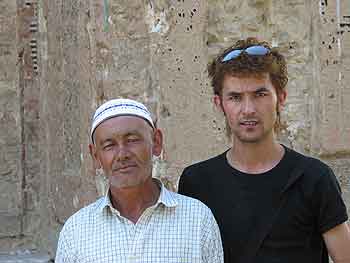
Fig. 15 Photograph of interpreter and tomb custodian (left) of the Tughluq Tömur Khan mazar in Huocheng in 2004. [BGD]
A second or classical period of Islamic culture and architecture in Xinjiang extends from the 13th to the 18th centuries. An international Muslim architecture was introduced and blended with native styles used for earlier religious buildings, a phenomenon which took place throughout many parts of the Islamic world, including Syria and Turkey. The gems of Central Asian Islamic architecture are represented by mosques (Uyghur: metxit) and tombs (mazar). With the Muslim conversion, mosques came to be the central buildings in Uyghur communities throughout Xinjiang. The mosque provided for the interaction of public spaces and private spiritual spaces, while the tomb is venerated as a site of pilgrimage and contemplation. The mosque is no longer accorded centrality in most cities and towns in Xinjiang; the dawn call of the muezzin has been replaced in most of Xinjiang by the call of the military bugle, and the mosque is no longer the educational and cultural centre for Uyghur communities.
The classical period of Islamic architecture is represented in its early stages by the polity of the Jaghatai khanate, which came to form the centre of the Uyghur cultural world. An early ruler of this polity in northern Xinjiang was a 7th-generation descendant of Genghis Khan, Tughluq Tömur (1328-63). He was the first Mongol khan in the Xinjiang region to convert to Islam, and he compelled 16,000 of his followers to do so with him. This conversion was a decisive event in the history of Xinjiang. His tomb was constructed in a classic Islamic style between 1363 and 1369. The tomb (see Fig. 10) is located in what was ancient Alimali, now part of Huocheng county in the Ili region, 20km north-west of the city of Yining and not far from China's border with Kazakhstan.
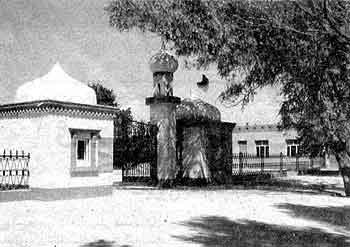
Fig. 16 Photograph showing new entrance to the Tughluq Tömur Khan mazar in Huocheng from Xinjiang Daily News, Uyghur edition, 20 August 2005.
Only the two central buildings of the original tomb complex remain (see Fig. 11), and several simple single storied buildings outside the complex were long ago torn down. This is one of the finest examples in China of the early-classical period of Islamic architecture. It was built at a time when Islamic architecture was flourishing throughout Central Asia, although its construction predates the Gur-Emir in Samarqand, the dynastic vault of the male Timurids, the first stage of which was completed in 1403. The Tughluq Tömur Khan mazar in Huocheng draws on many Central Asian and Persian architectural features, including the use of domed arches in a square structure, the use of fan-shaped arches and the two-storied structure. Access to the outer roof is via an internal ambulatory (see Fig. 12 and 13), and from the roof the tranquil gardens and fields at the site are visible.
The central dome rises to a height of 14m and its internal diameter is 7.4m. The brick decoration is 80cm thick on the arches and 30cm thick on the ceiling. There is no tile work on the ceilings, although the facade is elaborately decorated with tiles. (See Fig. 14) The inner walls of the square inner vault have supporting buttresses at the corners, but these are no longer surmounted by minaret forms. There was no central domed crypt within the mausoleum. The borders of the large recessed niche in the main vault are emblazoned with a text from the Quran, and decorated with geometric and floral motifs. More than twenty motifs can be identified on the tile-work on the facade, and the tiles and mosaics are multicoloured, predominantly blue, green, roasted tea colour, red, yellow and white.
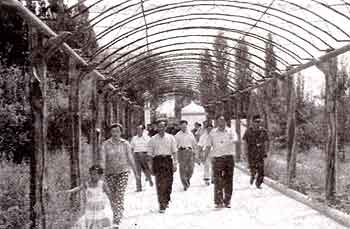
Fig. 17 Photograph showing new covered walkway to mazar of the Tughluq Tömur Khan mazar in Huocheng from Xinjiang Daily News, Uyghur edition, 20 August 2005.
The two buildings exemplify the non-iconic dignity and understatement of the finest Islamic architecture. In 2004, the building was little visited and it was possible to sit and talk with the custodian of the mazar whose forbears had served as custodians for several generations. (See Fig. 15) Apart from a brick enclosing fence and a sign providing a potted history of this monument to a different world, the mazar presented little evidence of its status as a cultural relics site. The visitor could wander the orchards which surround the mausoleum, climb via the cramped unadorned timber staircases with the mazar's keeper to the flat roof, or sit uninterrupted in the shade of the many fruit trees. The garden setting of the tomb provided perfect closure to tumultuous periods of history, only vaguely gleaned from the words of the mausoleum's custodian.
This has now all changed, as has much in the rest of the Ili-Kazak Autonomous Prefecture. Local cultural officials applied the principle of channelling much of the massive funding made available to them for the 50th anniversary of the establishment of the prefecture in 2004, a year ahead of that of Xinjiang itself, into the rapid transformation of archaeological and cultural relics sites into Chinese tourist destinations. The wedding between cultural heritage protection and tourism hastily arranged by the bumptious parenting officials of the cultural departments in Ili-Kazak has a "shotgun" feel to it. The pay-back to the officials for a job well down came in the form of an international tourism festival running from July to August 2005. To prepare for the event, local taxi drivers were forced to attend English language classes of an evening. New museums were hastily built, and, although the Museum of the Ili Kazak Autonomous Prefecture is a fine example of a local museum, various site museums and ethnic monuments in and outside Yining are laughable. Alongside Jingyuan Temple, a Buddhist temple in a predictable but dignified Central Plains style of the Qing dynasty, a new replica structure had been built to house the Qapqal Xibe Folkways Garden Museum. The Xibe ethnic group in the Ili region has an extraordinary history, one of which they are proud. Moved into the area from north-eastern China after the suppression of the Jungar uprising in order to serve as frontier guards for the Qing empire, the Xibe reflect and commingle with China's Manchu history. Many of the scholars working in the Qing Manchu archives in Beijing belong to the Xibe nationality, which now has its home in the Qapqal Xibe Autonomous County within the jurisdiction of Yining. The new museum, however, blurs the lines between what is genuinely old and what is ersatz; it seems to have been clearly conceived in the pages of some uplifting history text. Displays are not built around objects; the objects are marshalled to fit in with the captions. As a result, the original Jingyuan Temple stands largely neglected with grubby display cases housing Xibe artefacts, often of greater value and interest than those displayed next door, pushed into the recesses of its halls. Jingyuan Temple stands plundered with the booty dragged out for visitors to appreciate in the neighbouring new museum. The curators of the Qapqal Xibe Folkways Garden Museum have recast Xibe history as Manchu history, re-cast in turn as Qing Chinese history. The grounds of the museum house a prominent bronze monumental statue of the warrior hero who led the Xibe on their tough migratory march across China. Again, the statue evokes the qualities of the Chinese martial hero.
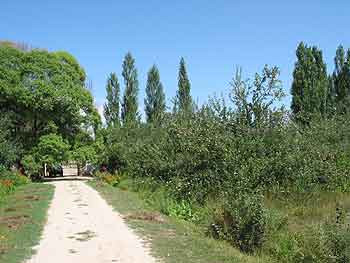
Fig. 18 Photograph showing walkway to the Tughluq Tömur Khan mazar in Huocheng in 2004. [BGD]
As it transpired, few travellers from overseas were attracted to Ili for the international tourism festival and most visitors were government functionaries being driven about in SUVs for conferences. They appeared more concerned to see for themselves this test-run laboratory of cultural heritage protection in ethnic minority Xinjiang, presumably in anticipation of the next year's 50th anniversary celebrations for the whole of Xinjiang.
Nor, for that matter, has the Tughluq Tömur Khan's mazar in Huocheng county been spared the frenzy of tourist make-overs. It has also been provided with an appropriately landscaped setting, clarifying its honoured position within the acceptable image of ethnic minority Xinjiang. A grandiose entrance was constructed (see Fig. 16), as well as a parking area for visitors' cars. The unspoiled path between the fruit trees which shielded the mazar was roofed in a fashion that evoked wine garden Xinjiang and the strains of The Student Prince. (See Fig. 17 and 18) The flourish to the monumentality of the Tughluq Tömur Khan's mazar was provided by a bronze statue of the monument's ancient owner. A typical Mongol warrior bears down on his bronze horse combining the features of a Mongolian pony and an Arab stallion. (See Fig. 19)
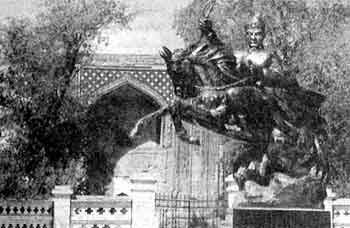
Fig. 19 Photograph showing new bronze statue of Tughluq Tömur Khan at the front of his mazar from Xinjiang Daily News, Uyghur edition, 20 August 2005.
Uyghur Beijing, which strangely preserved some sense of Uyghur identity outside Xinjiang, has also now gone. Most of the cheap Uyghur eateries around Weigongcun that sustained generations of university students and served as venues for gatherings of ethnic Uyghur musicians, artists and intellectuals in the 1980s and 1990s, have been victims of the recent transformation of the place at the hands of realtors. Beijing now has many fewer Uyghur restaurants than before, and most of these are filled with entertainment that focuses on flamenco and belly dancing. At the same time as another source of ethnic and cultural diversity has gone missing from the capital, ethnic minority Xinjiang is itself being wrapped in new packaging. Tourism and cultural heritage preservation can form a deadly concoction, and an eager acceptance of diverse minority ways can also signal a failure to embrace alternative cultural heritages within China's own cultural heritages. It would perhaps be glib to suggest that the simple absence of nominal plural forms in Chinese lies at the heart of this dilemma. The problems faced by Xinjiang in the area of cultural heritage are no longer the result of an overt cultural clash, rather one of the implacable re-presentation in paternalistic packaging. Tourism and economic development now pose the same threats to ethnic minority regions that they do to the rest of the country.
On the policy level, China in the past showed remarkable insensitivity to the cultural heritages of ethnic groups and regions, as well as a blindness to the multicultural underpinnings and origins of Han culture itself. However, much of the present problem is simply that of an ill-conceived modernisation program flagged with economic indicators, suggesting that a modernistic, rather than a truly, modern approach is in operation. Similarly, modern theatre could not be conceived in China in the 1950s except as alternative song or speech dramatisations presented within the confines of the proscenium arch. Inside this new ambience of "packaging" and presentation, Peking Opera and the dozens of other regional operas that characterised Chinese theatre and that flourished in teahouse performance spaces, withered away and died. Yet the unfamiliar "spoken drama" (huaju) also failed to gain wide acceptance in China. It is the unitary and unified stage on which Xinjiang's cultural heritage is cast, and the role of tourist attraction to which it is assigned, that is proving detrimental today. [BGD]
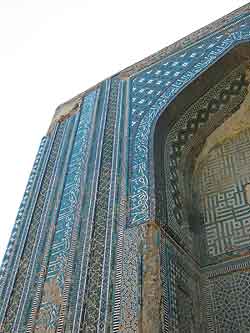
Photograph showing detail of upper left corner at front of the Tughluq Tömur Khan mazar in Huocheng. [BGD]
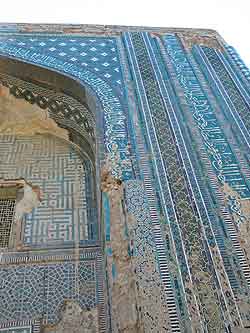
Photograph showing detail of upper right corner at front of the Tughluq Tömur Khan mazar in Huocheng. [BGD]
|

 Fig. 2 Painting showing Mao Zedong and representatives of various ethnic groups from Xinjiang. Painting titled Chairman Mao Is the Red Sun in Our Hearts by Gong Jianxin, work commenced in 1964.
Fig. 2 Painting showing Mao Zedong and representatives of various ethnic groups from Xinjiang. Painting titled Chairman Mao Is the Red Sun in Our Hearts by Gong Jianxin, work commenced in 1964.
 Fig.3 Removed section of Kumtura caves showing Buddha delivering a sermon
(now in the collection of the Museum of Indian Art Berlin; MIK III 9024)
Fig.3 Removed section of Kumtura caves showing Buddha delivering a sermon
(now in the collection of the Museum of Indian Art Berlin; MIK III 9024)
 Fig.4 Triptych from outer passage, Qizil cave no. 224 (now in the collection of the Museum of Indian Art Berlin; MIK III 8864)
Fig.4 Triptych from outer passage, Qizil cave no. 224 (now in the collection of the Museum of Indian Art Berlin; MIK III 8864)
 Fig.5 View of ceiling mural in Kumtura cave GK no. 21
Fig.5 View of ceiling mural in Kumtura cave GK no. 21
 Fig.6 View of ceiling and wall from Qizil cave no. 8
Fig.6 View of ceiling and wall from Qizil cave no. 8
 Fig.7 Corner of ceiling showing lozenge decoration in Jataka tale in Qizil cave no. 17
Fig.7 Corner of ceiling showing lozenge decoration in Jataka tale in Qizil cave no. 17
 Fig.8 View from distance of the exterior of the Kumtura caves with the Muzat river in the foreground
Fig.8 View from distance of the exterior of the Kumtura caves with the Muzat river in the foreground
 Fig.9 View of southern corner of ceiling in Kumtura cave no. 23
Fig.9 View of southern corner of ceiling in Kumtura cave no. 23
 Fig. 10 Photograph showing the Tughluq Tömur Khan mazar in Huocheng in 2004. [BGD]
Fig. 10 Photograph showing the Tughluq Tömur Khan mazar in Huocheng in 2004. [BGD]
 Fig. 11 Photograph showing left sepulchre at the Tughluq Tömur Khan mazar in Huocheng in 2004. [BGD]
Fig. 11 Photograph showing left sepulchre at the Tughluq Tömur Khan mazar in Huocheng in 2004. [BGD]
 Fig. 12 Photograph showing stairway and ambulatory within the walls of Tughluq Tömur Khan mazar in Huocheng in 2004. [BGD]
Fig. 12 Photograph showing stairway and ambulatory within the walls of Tughluq Tömur Khan mazar in Huocheng in 2004. [BGD]
 Fig. 13 Photograph showing view of roof of the Tughluq Tömur Khan mazar in Huocheng in 2004. [BGD]
Fig. 13 Photograph showing view of roof of the Tughluq Tömur Khan mazar in Huocheng in 2004. [BGD]
![Photograph showing tiled façade of the Tughluq Tömur Khan mazar in Huocheng in 2004. [BGD]](003/_pix/chn3edit12.jpg) Fig. 14 Photograph showing tiled façade of the Tughluq Tömur Khan mazar in Huocheng in 2004. [BGD]
Fig. 14 Photograph showing tiled façade of the Tughluq Tömur Khan mazar in Huocheng in 2004. [BGD]
 Fig. 15 Photograph of interpreter and tomb custodian (left) of the Tughluq Tömur Khan mazar in Huocheng in 2004. [BGD]
Fig. 15 Photograph of interpreter and tomb custodian (left) of the Tughluq Tömur Khan mazar in Huocheng in 2004. [BGD]
 Fig. 16 Photograph showing new entrance to the Tughluq Tömur Khan mazar in Huocheng from Xinjiang Daily News, Uyghur edition, 20 August 2005.
Fig. 16 Photograph showing new entrance to the Tughluq Tömur Khan mazar in Huocheng from Xinjiang Daily News, Uyghur edition, 20 August 2005.
 Fig. 17 Photograph showing new covered walkway to mazar of the Tughluq Tömur Khan mazar in Huocheng from Xinjiang Daily News, Uyghur edition, 20 August 2005.
Fig. 17 Photograph showing new covered walkway to mazar of the Tughluq Tömur Khan mazar in Huocheng from Xinjiang Daily News, Uyghur edition, 20 August 2005.
 Fig. 18 Photograph showing walkway to the Tughluq Tömur Khan mazar in Huocheng in 2004. [BGD]
Fig. 18 Photograph showing walkway to the Tughluq Tömur Khan mazar in Huocheng in 2004. [BGD]
 Fig. 19 Photograph showing new bronze statue of Tughluq Tömur Khan at the front of his mazar from Xinjiang Daily News, Uyghur edition, 20 August 2005.
Fig. 19 Photograph showing new bronze statue of Tughluq Tömur Khan at the front of his mazar from Xinjiang Daily News, Uyghur edition, 20 August 2005.
 Photograph showing detail of upper left corner at front of the Tughluq Tömur Khan mazar in Huocheng. [BGD]
Photograph showing detail of upper left corner at front of the Tughluq Tömur Khan mazar in Huocheng. [BGD]
 Photograph showing detail of upper right corner at front of the Tughluq Tömur Khan mazar in Huocheng. [BGD]
Photograph showing detail of upper right corner at front of the Tughluq Tömur Khan mazar in Huocheng. [BGD]